

| Cruise Region : Mediterranean Sea, Round the world cruises |
| Company : MSC Cruises |
| Ship : MSC Magnifica |
| Journey Start : Tue 07 Jan 2025 |
| Journey End : Wed 07 May 2025 |
| Count Nights : 120 nights |
| Day | Port | Date | Arrival | Departure |
|---|---|---|---|---|
| 1 | Barcelona / Spain | Tue 07 Jan | 18:00 | |
| 2 | Day at sea / Sea | Wed 08 Jan | ||
| 3 | Málaga / Spain | Thu 09 Jan | 07:00 | 17:00 |
| 4 | Casablanca / Morocco | Fri 10 Jan | 07:00 | 22:00 |
| 5 | Day at sea / Sea | Sat 11 Jan | ||
| 6 | Day at sea / Sea | Sun 12 Jan | ||
| 7 | Day at sea / Sea | Mon 13 Jan | ||
| 8 | Mindelo / Cape Verde | Tue 14 Jan | 08:00 | 18:00 |
| 9 | Day at sea / Sea | Wed 15 Jan | ||
| 10 | Day at sea / Sea | Thu 16 Jan | ||
| 11 | Day at sea / Sea | Fri 17 Jan | ||
| 12 | Day at sea / Sea | Sat 18 Jan | ||
| 13 | Salvador / Brazil | Sun 19 Jan | 08:00 | 16:00 |
| 14 | Day at sea / Sea | Mon 20 Jan | ||
| 15 | Rio de Janeiro / Brazil | Tue 21 Jan | 10:00 | 23:59 |
| 16 | Rio de Janeiro / Brazil | Wed 22 Jan | 00:01 | 16:00 |
| 17 | Day at sea / Sea | Thu 23 Jan | ||
| 18 | Day at sea / Sea | Fri 24 Jan | ||
| 19 | Buenos Aires / Argentina | Sat 25 Jan | 11:00 | 23:59 |
| 20 | Buenos Aires / Argentina | Sun 26 Jan | 00:01 | 20:00 |
| 21 | Day at sea / Sea | Mon 27 Jan | ||
| 22 | Day at sea / Sea | Tue 28 Jan | ||
| 23 | Puerto Madryn / Argentina | Wed 29 Jan | 09:00 | 18:00 |
| 24 | Day at sea / Sea | Thu 30 Jan | ||
| 27 | Day at sea / Sea | Sun 02 Feb | ||
| 28 | Ushuaia / Argentina | Mon 03 Feb | 06:00 | 20:00 |
| 29 | Day at sea / Sea | Tue 04 Feb | ||
| 30 | Day at sea / Sea | Wed 05 Feb | ||
| 31 | Puerto Chacabuco / Chile | Thu 06 Feb | 07:00 | 15:00 |
| 32 | Puerto Montt / Chile | Fri 07 Feb | 09:00 | 18:00 |
| 33 | Day at sea / Sea | Sat 08 Feb | ||
| 34 | Valparaíso / Chile | Sun 09 Feb | 08:00 | 23:59 |
| 35 | Valparaíso / Chile | Mon 10 Feb | 00:01 | 18:00 |
| 36 | Day at sea / Sea | Tue 11 Feb | ||
| 37 | Day at sea / Sea | Wed 12 Feb | ||
| 38 | Day at sea / Sea | Thu 13 Feb | ||
| 39 | Day at sea / Sea | Fri 14 Feb | ||
| 40 | Xanga Roa / Chile | Sat 15 Feb | 07:00 | 17:00 |
| 41 | Day at sea / Sea | Sun 16 Feb | ||
| 42 | Day at sea / Sea | Mon 17 Feb | ||
| 43 | Bounty Bay Passage / Pitcairn Islands | Tue 18 Feb | 08:00 | 11:00 |
| 44 | Day at sea / Sea | Wed 19 Feb | ||
| 45 | Day at sea / Sea | Thu 20 Feb | ||
| 46 | Papeete / French Polynesia | Fri 21 Feb | 09:00 | 23:59 |
| 47 | Papeete / French Polynesia | Sat 22 Feb | 00:01 | 18:00 |
| 48 | Moorea Islands Society / French Polynesia | Sun 23 Feb | 08:00 | 18:00 |
| 49 | Day at sea / Sea | Mon 24 Feb | ||
| 50 | Eytutaki Eytutaki Aitutaki / Cook Islands | Tue 25 Feb | 08:00 | 19:00 |
| 51 | Rarotonga / Cook Islands | Wed 26 Feb | 08:00 | 18:00 |
| 52 | Day at sea / Sea | Thu 27 Feb | ||
| 53 | Day at sea / Sea | Fri 28 Feb | ||
| 54 | Day at sea / Sea | Sat 01 Mar | ||
| 55 | Day at sea / Sea | Sun 02 Mar | ||
| 56 | Day at sea / Sea | Mon 03 Mar | ||
| 57 | Cocksen Hole / Honduras | Tue 04 Mar | 08:00 | 18:00 |
| 58 | Oakland / New Zealand | Wed 05 Mar | 08:00 | 18:00 |
| 59 | Toran / New Zealand | Thu 06 Mar | 08:00 | 18:00 |
| 60 | Day at sea / Sea | Fri 07 Mar | ||
| 61 | Christchurch / New Zealand | Sat 08 Mar | 08:00 | 18:00 |
| 62 | Dani's / New Zealand | Sun 09 Mar | 08:00 | 16:00 |
| 63 | Milford Sound / New Zealand | Mon 10 Mar | 13:00 | 17:00 |
| 64 | Day at sea / Sea | Tue 11 Mar | ||
| 65 | Tasmania (Hobart) / Australia | Wed 12 Mar | 13:00 | 21:00 |
| 66 | Day at sea / Sea | Thu 13 Mar | ||
| 67 | Sydney / Australia | Fri 14 Mar | 09:00 | 23:59 |
| 68 | Sydney / Australia | Sat 15 Mar | 00:01 | 20:00 |
| 69 | Eden Valley / Australia | Sun 16 Mar | 09:00 | 20:00 |
| 70 | Day at sea / Sea | Mon 17 Mar | ||
| 71 | Melbourne / Australia | Tue 18 Mar | 08:00 | 20:00 |
| 72 | Day at sea / Sea | Wed 19 Mar | ||
| 73 | Adelaide / Australia | Thu 20 Mar | 07:00 | 19:00 |
| 74 | Pennecho / Australia | Fri 21 Mar | 08:00 | 20:00 |
| 75 | Day at sea / Sea | Sat 22 Mar | ||
| 76 | Day at sea / Sea | Sun 23 Mar | ||
| 77 | Albany / Australia | Mon 24 Mar | 07:00 | 17:00 |
| 78 | Busselton | Tue 25 Mar | 10:00 | 22:00 |
| 79 | Samson / Australia | Wed 26 Mar | 08:00 | 23:59 |
| 80 | Samson / Australia | Thu 27 Mar | 00:01 | 18:00 |
| 81 | Day at sea / Sea | Fri 28 Mar | ||
| 82 | Day at sea / Sea | Sat 29 Mar | ||
| 83 | Day at sea / Sea | Sun 30 Mar | ||
| 84 | Day at sea / Sea | Mon 31 Mar | ||
| 85 | Day at sea / Sea | Tue 01 Apr | ||
| 86 | Day at sea / Sea | Wed 02 Apr | ||
| 87 | Day at sea / Sea | Thu 03 Apr | ||
| 88 | Little ones / Maldives | Fri 04 Apr | 07:00 | 17:00 |
| 89 | Day at sea / Sea | Sat 05 Apr | ||
| 90 | Day at sea / Sea | Sun 06 Apr | ||
| 91 | Victoria, MAE Island / Seychelles | Mon 07 Apr | 10:00 | 18:00 |
| 92 | Day at sea / Sea | Tue 08 Apr | ||
| 93 | Nosy Be / Madagascar | Wed 09 Apr | 09:00 | 18:00 |
| 94 | Day at sea / Sea | Thu 10 Apr | ||
| 95 | Day at sea / Sea | Fri 11 Apr | ||
| 96 | Day at sea / Sea | Sat 12 Apr | ||
| 97 | Day at sea / Sea | Sun 13 Apr | ||
| 98 | Port Elizabeth / South Africa | Mon 14 Apr | 08:00 | 18:00 |
| 99 | Day at sea / Sea | Tue 15 Apr | ||
| 100 | Cape Town / South Africa | Wed 16 Apr | 08:00 | 18:00 |
| 101 | Day at sea / Sea | Thu 17 Apr | ||
| 102 | Walvis Bay / Namibia | Fri 18 Apr | 09:00 | 18:00 |
| 103 | Day at sea / Sea | Sat 19 Apr | ||
| 104 | Day at sea / Sea | Sun 20 Apr | ||
| 105 | Day at sea / Sea | Mon 21 Apr | ||
| 106 | Day at sea / Sea | Tue 22 Apr | ||
| 107 | Day at sea / Sea | Wed 23 Apr | ||
| 108 | Day at sea / Sea | Thu 24 Apr | ||
| 109 | Day at sea / Sea | Fri 25 Apr | ||
| 110 | Dakar / Senegal | Sat 26 Apr | 08:00 | 19:00 |
| 111 | Day at sea / Sea | Sun 27 Apr | ||
| 112 | Day at sea / Sea | Mon 28 Apr | ||
| 113 | Puerto Del Rosario-Fuerteventura / Spain | Tue 29 Apr | 08:00 | 17:00 |
| 114 | Day at sea / Sea | Wed 30 Apr | ||
| 115 | Day at sea / Sea | Thu 01 May | ||
| 116 | Day at sea / Sea | Fri 02 May | ||
| 117 | Sicily Palermo / Italy | Sat 03 May | 07:00 | 18:00 |
| 118 | Rome (Civitavecchia) / Italy | Sun 04 May | 08:00 | 19:00 |
| 119 | Genoa / Italy | Mon 05 May | 08:00 | 18:00 |
| 120 | Marcel / France | Tue 06 May | 09:00 | 18:00 |
| 121 | Barcelona / Spain | Wed 07 May | 08:00 |
The cruise booking conditions may vary depending on the itinerary, season, and selected package. However, the basic conditions include:
1. **Deposit and Full Payment:**
- A deposit of 30% is required to confirm the booking.
- Full payment is usually required 60-90 days prior to departure. For late bookings, full payment may be required immediately.
2. **Cancellation and Penalties:**
- Cancellation penalties depend on the time remaining before departure. The closer to the departure date, the higher the penalties.
- More than 60 days before departure: €50 per person
- 59 to 30 days: 30% of the total price
- 29 to 22 days: 50%
- 21 to 15 days: 70%
- Less than 14 days before departure: 100%
3. **Booking Changes:**
- Passenger substitutions are subject to an additional fee of €50 per person.
4. **Insurance:**
- It is recommended to purchase travel or medical insurance to cover potential costs in case of cancellation or changes to the booking, as well as medical expenses during the cruise.
5. **Document Requirements:**
- All passengers must have valid passports and visas for visiting countries (if required by the destination) on the cruise itinerary. The responsibility for obtaining visas lies with the passengers.
Important: MSC reserves the right to change the cabin to the same category or higher. However, MSC will do everything possible to avoid changing the cabin.
Additional costs:
Additionally paid on the liner:
For any purchase of goods on the liner in bars, restaurants, shops and services in the spa center, hairdresser, etc. you will be additionally charged a service fee, which will average 15% of the purchase price.
The standard cruise fare typically does not include a drink package. You may choose and add an appropriate drink package to your cruise.
Drink package rules:
- All guests sharing a cabin, including children over 3 years old, must book a drink package. For children, a MINORS PACKAGE is available.
- Seating together in the main restaurant for dinner is only possible if all guests have booked the same drink package or none at all.
- Packages are for personal use only; cruise cards cannot be shared. Only one drink can be ordered per request. If misuse of the package occurs, the cruise company reserves the right to block the package without refunding the remaining days.
- Drink packages are valid every day throughout the cruise and cannot be purchased for individual days.
- Packages are not valid in specialty bars, cafés, and restaurants, including:
- Venchi 1878 establishments, Jean-Philippe Maury venues, MSC Virtuosa Starship Club, MSC World Europa Coffee Emporium, MSC World Europa Raj Polo Tea Room.
- Due to Saudi Arabian law, alcoholic drinks are not available while docked in Saudi Arabian ports. Alcoholic beverages will only be available once the ship leaves the port and is at sea.
- Drink packages purchased onboard will be more expensive than those bought when booking the cruise.
- Detailed lists of drink packages will be available onboard.
- Packages are valid on Sir Bani Yas and Ocean Cay islands.
Prices per person, per day:
Mediterranean; Northern Europe; UAE & Persian Gulf; Red Sea; Caribbean from Fort-de-France*
EASY PACKAGE (adults 18+)
- Cruises 1-7 days: €43
- Cruises 8+ days: €39
√ a selection of classic cocktails, house spirits and mixed drinks
√ non-alcoholic cocktails
√ dedicated selection of house wines by the glass, beer, sodas, fruit juices
√ bottled mineral water
√ classic hot drink (espresso, cappuccino, coffee latte, hot tea)
Valid: 24/7 in select onboard bars, main restaurants, and buffet (excluding specialty restaurants).
EASY PLUS PACKAGE (adults 18+)
- Cruises 1-7 days: €57
- Cruises 8+ days: €54
All drinks priced up to €9 or $10*
√ frozen and classic cocktails, variety of spirit brands, liquors and cordials
√ a selection of wine by the glass
√ a 10% discount on bottled wines purchased onboard
√ a wide variety of draft and bottled beers, non-alcoholic cocktails, soft drinks
√ mineral water
√ coffee drinks, hot chocolate and hot teas
The Easy Plus Package covers all the above served at our bars, buffet, main restaurant and specialty restaurants. What’s more, it also includes Ocean Cay MSC Marine Reserve and other exclusive MSC destinations.
*€9 for European, Dubai, Abu Dhabi and Qatar, Egypt, Red Sea & Saudi Arabia, and Antilles cruises; $10 for Caribbean, Northern America, South America and Asia cruises.
Valid: 24/7 in onboard bars, main restaurants, buffet, and specialty restaurants.
PREMIUM EXTRA PACKAGE (adults 18+)
- Cruises 1-7 days: €77
- Cruises 8+ days: €74
All drinks priced up to €14 or $16*
√ an extensive variety of frozen and classic cocktails, premium brand spirits, liquors and cordials
√ a varied selection of wines and champagne by the glass
√ a 25% discount on bottles of wine and champagne purchased on board
√ our entire selection of draft, craft and bottled beers, sodas, fruit juices
√ mineral water, energy drinks
√ coffee drinks, hot chocolate and teas
Valid: 24/7 in onboard bars, main restaurants, buffet, and specialty restaurants.
ALCOHOL-FREE PACKAGE (adults 18+)
- Cruises 1-7 days: €26
- Cruises 8+ days: €24
√ a wide choice of alcohol-free cocktails, sodas, energy drinks
√ mineral water, flavored water, fruit juices
√ classic coffee drinks and coffee specialties, hot chocolate, hot teas, soft-serve ice cream
Valid: 24/7 in onboard bars, main restaurants, buffet (excluding specialty restaurants).
MINORS PACKAGE (children 3-17 years)**
- Cruises 1-7 days: €18
- Cruises 8+ days: €17
√ alcohol-free cocktails, sodas, energy drinks
√ mineral water, flavored water, fruit juices
√ a selection of coffee drinks, hot chocolate, hot tea and soft-serve ice cream.
Applicable for minors (age respective of the country/operation area) who are part of a group/family purchasing an adult package.
Valid: 24/7 in select onboard bars, main restaurants, and buffet (excluding specialty restaurants).
Prices and rules are similar for other regions, with minor variations in costs for South America, Asia, and the Far East.
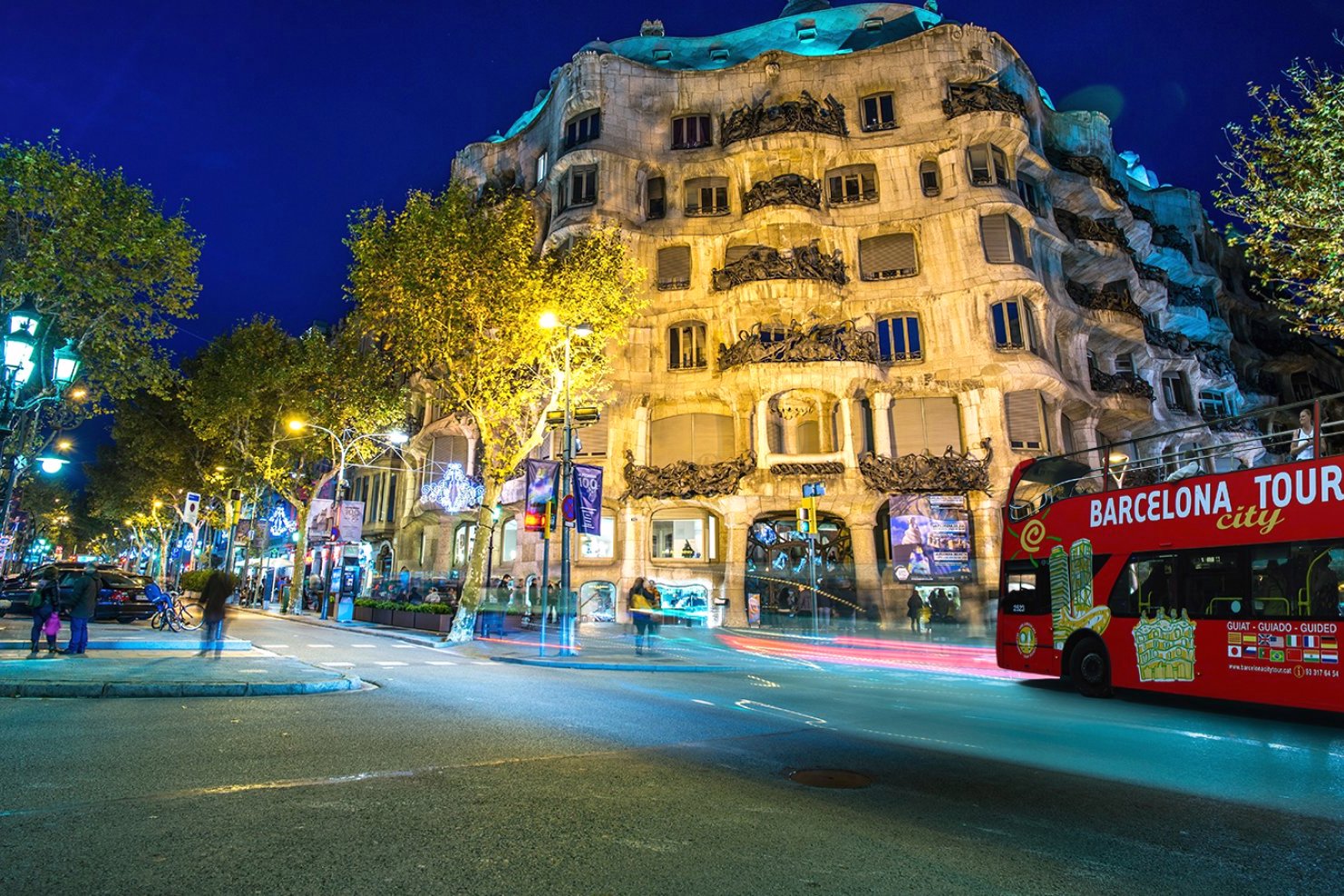
Barcelona is a city in Spain. It is the capital and largest city of Catalonia, as well as the second most populous municipality of Spain. With a population of 1.6 million within city limits, its urban area extends to numerous neighbouring municipalities within the Province of Barcelona and is home to around 4.8 million people, making it the sixth most populous urban area in the European Union after Paris, London, Madrid, the Ruhr area and Milan. It is one of the largest metropolises on the Mediterranean Sea, located on the coast between the mouths of the rivers Llobregat and Besòs, and bounded to the west by the Serra de Collserola mountain range, the tallest peak of which is 512 metres (1,680 feet) high.
Founded as a Roman city, in the Middle Ages Barcelona became the capital of the County of Barcelona. After merging with the Kingdom of Aragon, Barcelona continued to be an important city in the Crown of Aragon as an economic and administrative centre of this Crown and the capital of the Principality of Catalonia. Barcelona has a rich cultural heritage and is today an important cultural centre and a major tourist destination. Particularly renowned are the architectural works of Antoni Gaudí and Lluís Domènech i Montaner, which have been designated UNESCO World Heritage Sites. The headquarters of the Union for the Mediterranean are located in Barcelona. The city is known for hosting the 1992 Summer Olympics as well as world-class conferences and expositions and also many international sport tournaments.
Barcelona is one of the world's leading tourist, economic, trade fair and cultural centres, and its influence in commerce, education, entertainment, media, fashion, science, and the arts all contribute to its status as one of the world's major global cities. It is a major cultural and economic centre in southwestern Europe, 24th in the world (before Zürich, after Frankfurt) and a financial centre. In 2008 it was the fourth most economically powerful city by GDP in the European Union and 35th in the world with GDP amounting to €177 billion. In 2012 Barcelona had a GDP of $170 billion; and it was leading Spain in employment rate in that moment.
In 2009 the city was ranked Europe's third and one of the world's most successful as a city brand. In the same year the city was ranked Europe's fourth best city for business and fastest improving European city, with growth improved by 17% per year, and the city has been experiencing strong and renewed growth for the past three years. Since 2011 Barcelona has been a leading smart city in Europe. Barcelona is a transport hub, with the Port of Barcelona being one of Europe's principal seaports and busiest European passenger port, an international airport, Barcelona–El Prat Airport, which handles over 50 million passengers per year, an extensive motorway network, and a high-speed rail line with a link to France and the rest of Europe.

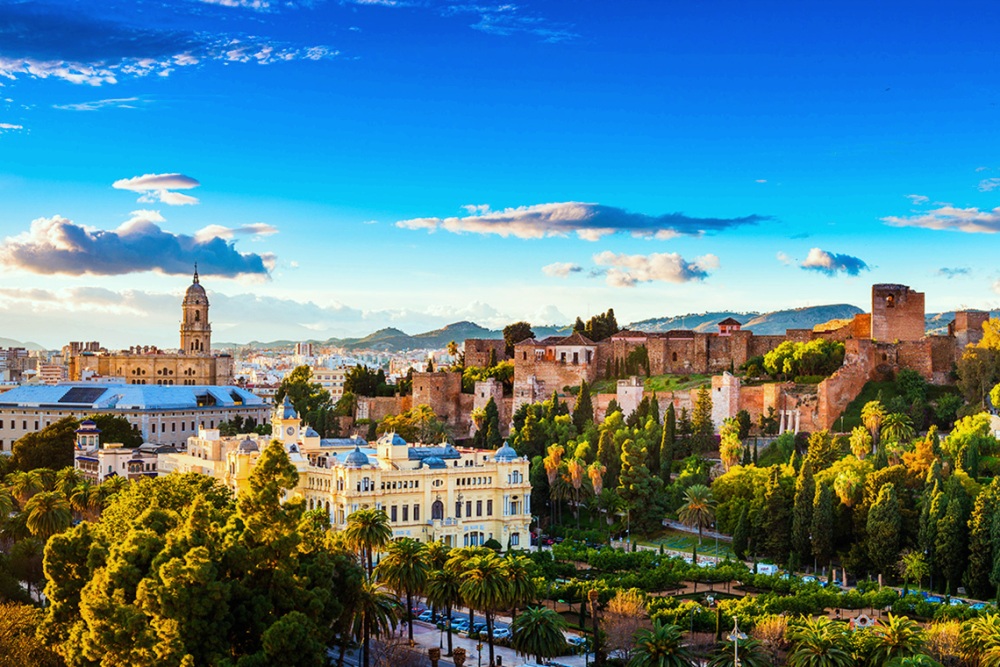
Málaga is a municipality, capital of the Province of Málaga, in the Autonomous Community of Andalusia, Spain. With a population of 569,130 in 2015, it is the second-most populous city of Andalusia and the sixth-largest in Spain. The southernmost large city in Europe, it lies on the Costa del Sol (Coast of the Sun) of the Mediterranean, about 100 kilometres (62.14 miles) east of the Strait of Gibraltar and about 130 km (80.78 mi) north of Africa.
Málaga's history spans about 2,800 years, making it one of the oldest cities in the world. According to most scholars, it was founded about 770 BC by the Phoenicians as Malaka From the 6th century BC the city was under the hegemony of Ancient Carthage, and from 218 BC, it was ruled by the Roman Republic and then empire as Malaca (Latin). After the fall of the empire and the end of Visigothic rule, it was under Islamic rule as Mālaqah for 800 years, but in 1487, the Crown of Castille gained control after the Reconquista. The archaeological remains and monuments from the Phoenician, Roman, Arabic and Christian eras make the historic center of the city an "open museum", displaying its history of nearly 3,000 years.
This important cultural infrastructure and the artistic heritage have culminated in the nomination of Málaga as a candidate for the 2016 European Capital of Culture.
The painter and sculptor Pablo Picasso, Hebrew poet and Jewish philosopher Solomon Ibn Gabirol and the actor Antonio Banderas were born in Málaga. The magnum opus of Cuban composer Ernesto Lecuona, "Malagueña", is named after the music of this region of Spain.
The most important business sectors in Málaga are tourism, construction and technology services, but other sectors such as transportation and logistics are beginning to expand. The Andalusia Technology Park (PTA), located in Málaga, has enjoyed significant growth since its inauguration in 1992. Málaga is the main economic and financial centre of southern Spain, home of the region's largest bank, Unicaja, and the fourth-ranking city in economic activity in Spain behind Madrid, Barcelona and Valencia.

Casablanca located in the central-western part of Morocco and bordering the Atlantic Ocean, is the largest city in Morocco. It is also the largest city in the Maghreb region, as well as one of the largest and most important cities in Africa, both economically and demographically.
Casablanca is Morocco's chief port and one of the largest financial centers on the continent. According to the 2014 population estimate, the city has a population of about 3.35 million in the urban area and over 6.8 million in the Casablanca-Settat region. Casablanca is considered the economic and business center of Morocco, although the national political capital is Rabat.
The leading Moroccan companies and international many corporations doing business in the country have their headquarters and main industrial facilities in Casablanca. Recent industrial statistics show Casablanca retains its historical position as the main industrial zone of the country. The Port of Casablanca is one of the largest artificial ports in the world, and the second largest port of North Africa, after Tanger-Med 40 km (25 mi) east of Tangier. Casablanca also hosts the primary naval base for the Royal Moroccan Navy.



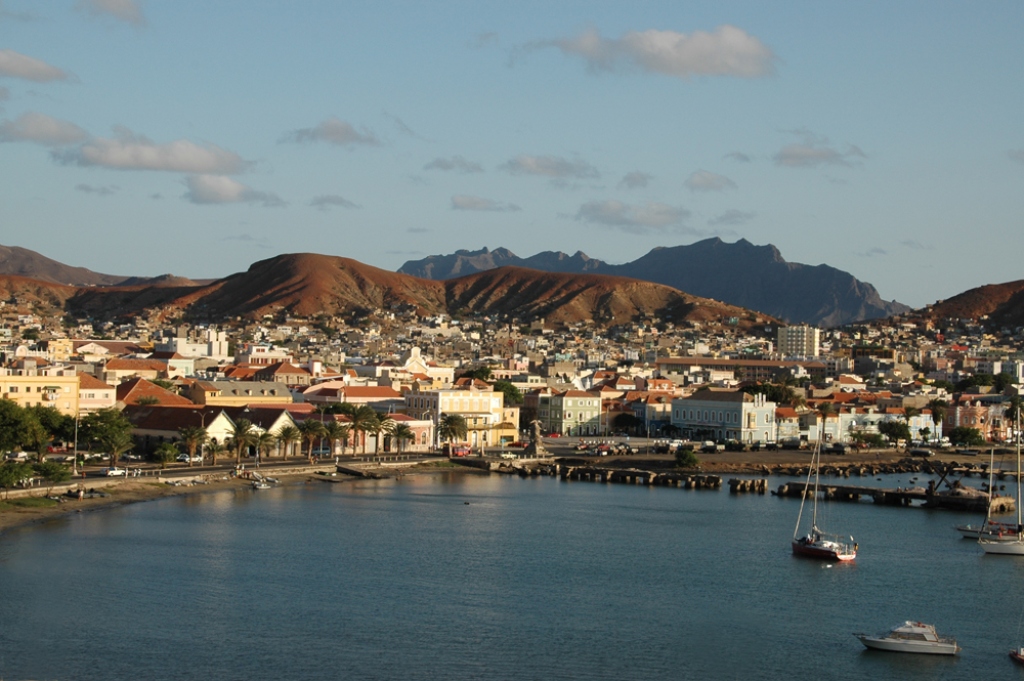
Mindelo is a port city in the northern part of the island of São Vicente in Cape Verde. Mindelo is also the seat of the parish of Nossa Senhora da Luz, and the municipality of São Vicente. The city is home to 93% of the entire island's population. Mindelo is known for its colourful and animated carnival celebrations, with roots in Portuguese traditions.





a port on the Atlantic coast of eastern Brazil, capital of the state of Bahia; population 2,892,625 (2007).

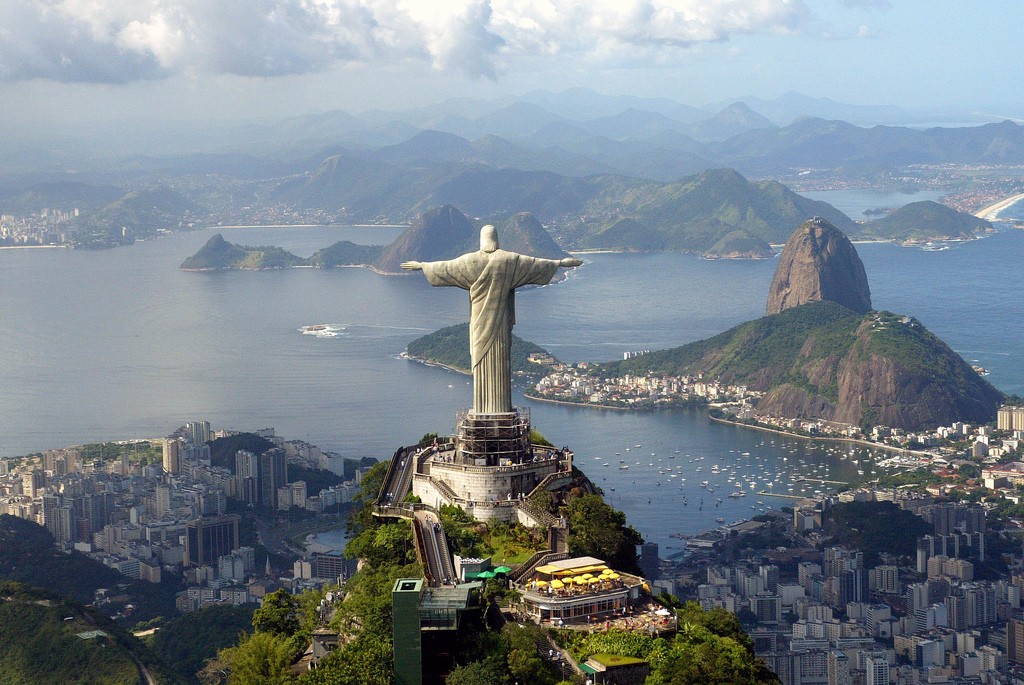
Rio de Janeiro is the second-most populous municipality in Brazil and the sixth-most populous in the Americas. The metropolis is anchor to the Rio de Janeiro metropolitan area, the second-most populous metropolitan area in Brazil and sixth-most populous in the Americas. Rio de Janeiro is the capital of the state of Rio de Janeiro, Brazil's third-most populous state. Part of the city has been designated as a World Heritage Site, named "Rio de Janeiro: CariocaLandscapes between the Mountain and the Sea", by UNESCO on 1 July 2012 as a Cultural Landscape.
Founded in 1565 by the Portuguese, the city was initially the seat of the Captaincy of Rio de Janeiro, a domain of the Portuguese Empire. Later, in 1763, it became the capital of the State of Brazil, a state of the Portuguese Empire. In 1808, when the Portuguese Royal Court transferred itself from Portugal to Brazil, Rio de Janeiro became the chosen seat of the court of Queen Maria I of Portugal, who subsequently, in 1815, under the leadership of her son, the Prince Regent, and future King João VI of Portugal, raised Brazil to the dignity of a kingdom, within the United Kingdom of Portugal, Brazil, and Algarves. Rio stayed the capital of the pluricontinental Lusitanian monarchy until 1822, when the War of Brazilian Independence began. This is one of the few instances in history that the capital of a colonising country officially shifted to a city in one of its colonies. Rio de Janeiro subsequently served as the capital of the independent monarchy, the Empire of Brazil, until 1889, and then the capital of a republican Brazil until 1960 when the capital was transferred to Brasília.

Rio de Janeiro is the second-most populous municipality in Brazil and the sixth-most populous in the Americas. The metropolis is anchor to the Rio de Janeiro metropolitan area, the second-most populous metropolitan area in Brazil and sixth-most populous in the Americas. Rio de Janeiro is the capital of the state of Rio de Janeiro, Brazil's third-most populous state. Part of the city has been designated as a World Heritage Site, named "Rio de Janeiro: CariocaLandscapes between the Mountain and the Sea", by UNESCO on 1 July 2012 as a Cultural Landscape.
Founded in 1565 by the Portuguese, the city was initially the seat of the Captaincy of Rio de Janeiro, a domain of the Portuguese Empire. Later, in 1763, it became the capital of the State of Brazil, a state of the Portuguese Empire. In 1808, when the Portuguese Royal Court transferred itself from Portugal to Brazil, Rio de Janeiro became the chosen seat of the court of Queen Maria I of Portugal, who subsequently, in 1815, under the leadership of her son, the Prince Regent, and future King João VI of Portugal, raised Brazil to the dignity of a kingdom, within the United Kingdom of Portugal, Brazil, and Algarves. Rio stayed the capital of the pluricontinental Lusitanian monarchy until 1822, when the War of Brazilian Independence began. This is one of the few instances in history that the capital of a colonising country officially shifted to a city in one of its colonies. Rio de Janeiro subsequently served as the capital of the independent monarchy, the Empire of Brazil, until 1889, and then the capital of a republican Brazil until 1960 when the capital was transferred to Brasília.



the capital city and chief port of Argentina, in the eastern central part of the country, on the Plata River; population 3,042,600 (est. 2008).

the capital city and chief port of Argentina, in the eastern central part of the country, on the Plata River; population 3,042,600 (est. 2008).


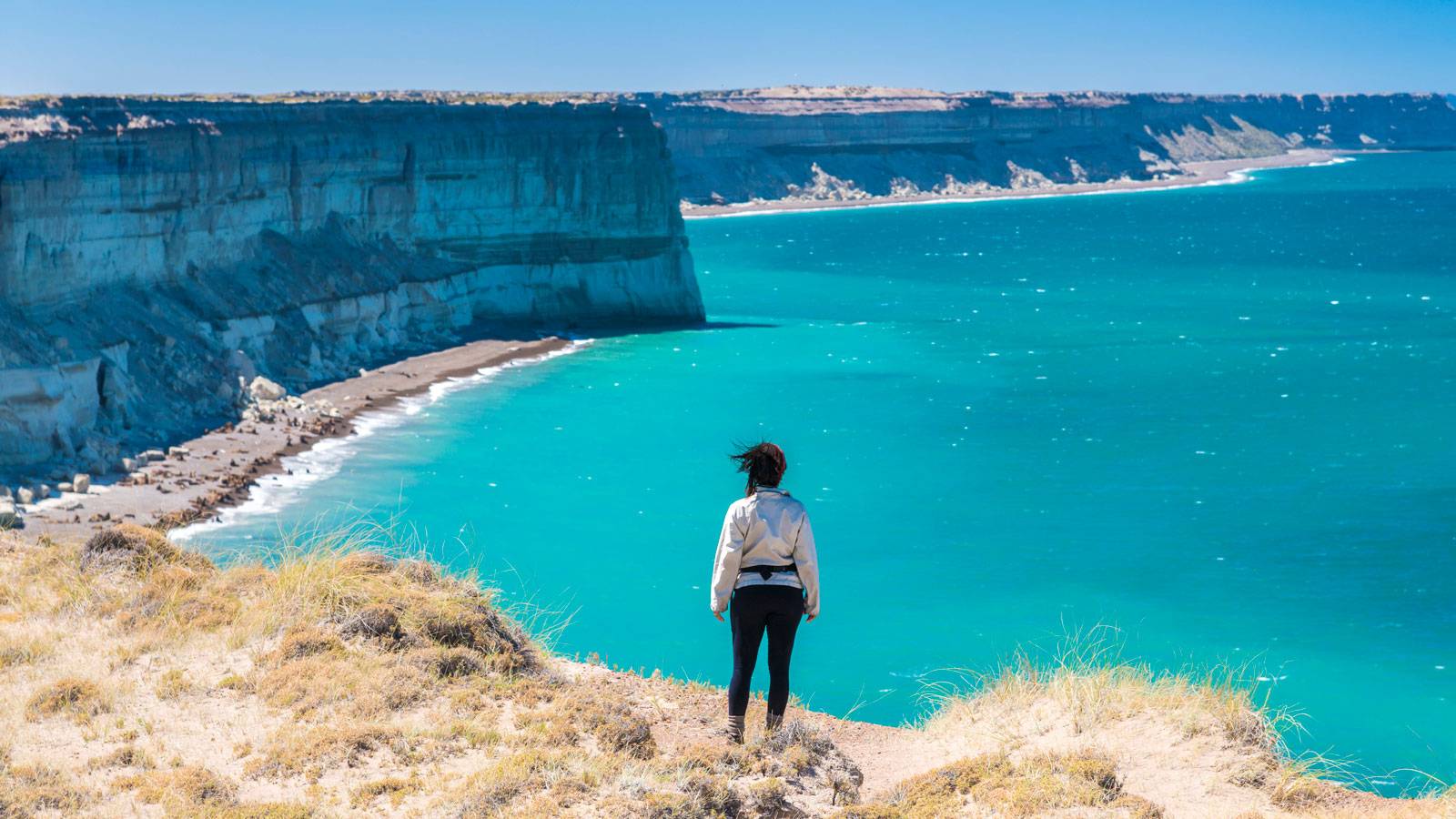
В западной части Аргентины расположен замечательный городок Пуэрто-Мадрин с населением менее 60 000 человек. Здесь Вы сможете понаблюдать за удивительными существами: китами, дельфинами, морскими львами и пингвинами. Это возможно благодаря расположению города вблизи полуострова Вальдес. Пуэрто-Мадрин не оставит равнодушными и любителей дайвинга и виндсерфинга. Также Вы получите возможность порыбачить в океане и отведать удивительную богатейшую аргентинскую кухню, которая является раем для мясоедов. Национальное блюдо Аргентины — parrilla представляет собой смесь из стейка, сосисок, мясных потрохов и все это изобилие готовится на гриле.


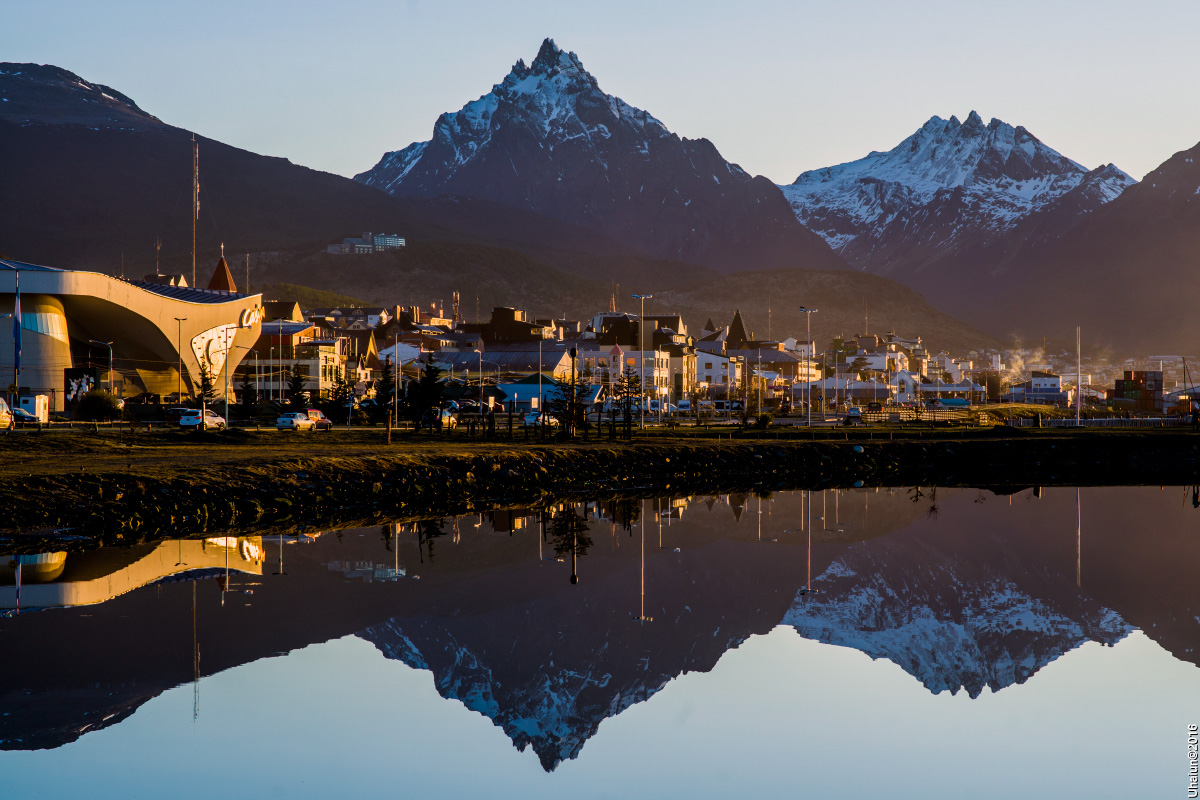
Ushuaia is the capital of Tierra del Fuego, Antártida e Islas del Atlántico Sur Province, Argentina. It is commonly regarded as the southernmost city in the world. Ushuaia is located in a wide bay on the southern coast of Isla Grande de Tierra del Fuego, bounded on the north by the Martial mountain range, and on the south by the Beagle Channel. It is the only municipality in the Department of Ushuaia, which has an area of 9,390 km2 (3,625 sq mi). It was founded October 12 of 1884 by Augusto Lasserreand is located on the shores of the Beagle Channel surrounded by the mountain range of the Martial Glacier, in the Bay of Ushuaia. Besides being an administrative center, it is a light industrial port and tourist hub.




Puerto Montt is a port city and commune in southern Chile, located at the northern end of the Reloncaví Sound in the Llanquihue Province, Los Lagos Region, 1,055 km to the south of the capital, Santiago. The commune spans an area of 1,673 km2 (646 sq mi) and has a population of 245,902 in 2017. It is bounded by the communes of Puerto Varas to the north, Cochamó to the east and southeast, Calbuco to the southwest and Maullín and Los Muermos to the west.
Founded as late as 1853 during the German colonization of southern Chile, Puerto Montt soon outgrew older neighboring cities due to its strategic position at the southern end of the Chilean Central Valley being a gateway city into Chiloé Archipelago, Llanquihue and Nahuel Huapi lakes and Western Patagonia.
Puerto Montt has gained renown and grown significantly due to the rise of Chile as the second largest salmon producer of the world during the 1990s and 2000s. However, the Chilean salmon aquaculture crisis of the late 2000s resulted at least temporarily in severe unemployment and exposed weaknesses in the local economy. The city's cultural heritage mixes elements of Chiloé culture with German heritage although the city has attracted a significant number of newcomers from all over Chile in the last 30 years due to employment opportunities.














Papeete is the capital city of French Polynesia, an overseas collectivity of France in the Pacific Ocean. The commune of Papeete is located on the island of Tahiti, in the administrative subdivision of the Windward Islands, of which Papeete is the administrative capital. The French High Commissioner also resides in Papeete. It is the primary center of Tahitian and French Polynesian public and private governmental, commercial, industrial and financial services, the hub of French Polynesian tourism and a commonly used port of call. The Windward Islands are themselves part of the Society Islands. The name Papeete means "water from a basket".
The urban area of Papeete had a total population of 136,771 inhabitants at the August 2017 census, 26,926 of whom lived in the commune of Papeete proper.

Papeete is the capital city of French Polynesia, an overseas collectivity of France in the Pacific Ocean. The commune of Papeete is located on the island of Tahiti, in the administrative subdivision of the Windward Islands, of which Papeete is the administrative capital. The French High Commissioner also resides in Papeete. It is the primary center of Tahitian and French Polynesian public and private governmental, commercial, industrial and financial services, the hub of French Polynesian tourism and a commonly used port of call. The Windward Islands are themselves part of the Society Islands. The name Papeete means "water from a basket".
The urban area of Papeete had a total population of 136,771 inhabitants at the August 2017 census, 26,926 of whom lived in the commune of Papeete proper.

The island was formed as a volcano 1.5 to 2.5 million years ago, the result of a Society hotspot in the mantle under the oceanic plate that formed the whole of the Society Archipelago. It is theorized that the current bays were formerly river basins that filled during the Holocene searise.
Mo'orea is about 10 miles in width from the west to the east. There are two small, nearly symmetrical bays on the north shore. The one to the west is called 'Ōpūnohu Bay, which is not very populated but many travelers have come into the bay. The main surrounding communes of the bay are Piha'ena in the east and Papetō'ai to the west. The one to the east is Cook's Bay, also called Pao Pao Bay since the largest commune of Mo'orea is at the bottom of the bay. The other communes are Piha'ena to the west and busy Maharepa to the east. The highest point is Mount Tohi'e'a, near the center of Mo'orea. It dominates the vista from the two bays and can be seen from Tahiti. There are also hiking trails in the mountains. The Vai'are Bay is another small inlet, smaller than the two main bays, on the east shore. This bay has been settled a lot and has a lot of business. The main village is located just south of the bay.


Аитутаки — атолл в Тихом океане в составе островов Кука, в 220 км севернее острова Раротонга. Аитутаки является вторым по посещаемости туристами островов в архипелаге Кука. Административный центр острова — Арутанга на западном побережье.

Rarotonga is the most populous island of the Cook Islands, with a population of 10,572 (census 2011), out of the country's total resident population of 14,974. Captain John Dibbs, master of the colonial brig Endeavour, is credited as the European discoverer on 25 July 1823, while transporting the missionary Rev. John Williams.
The Cook Islands' Parliament buildings and international airport are on Rarotonga. Rarotonga is a very popular tourist destination with many resorts, hotels and motels. The chief town, Avarua, on the north coast, is the capital of the Cook Islands.





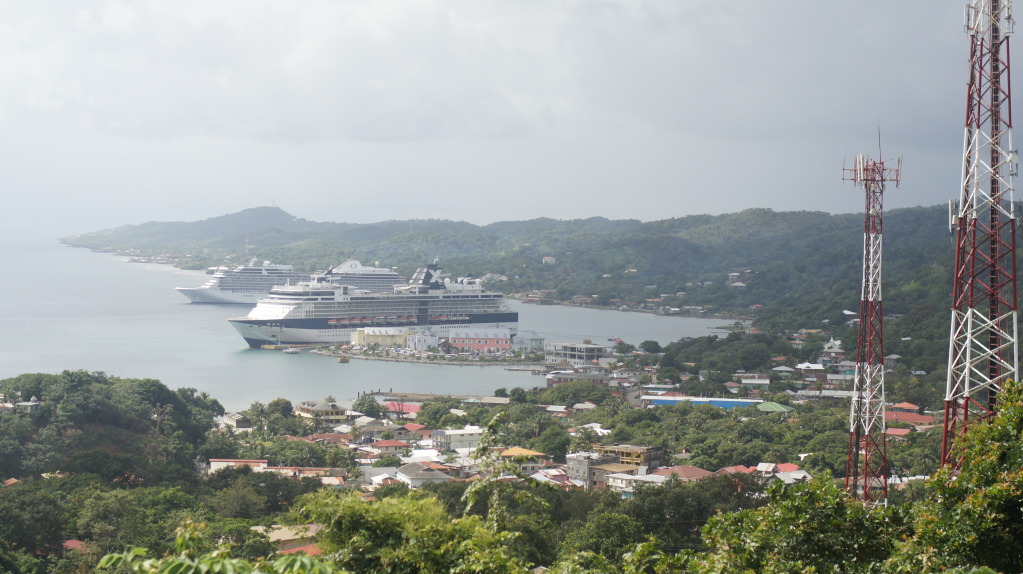
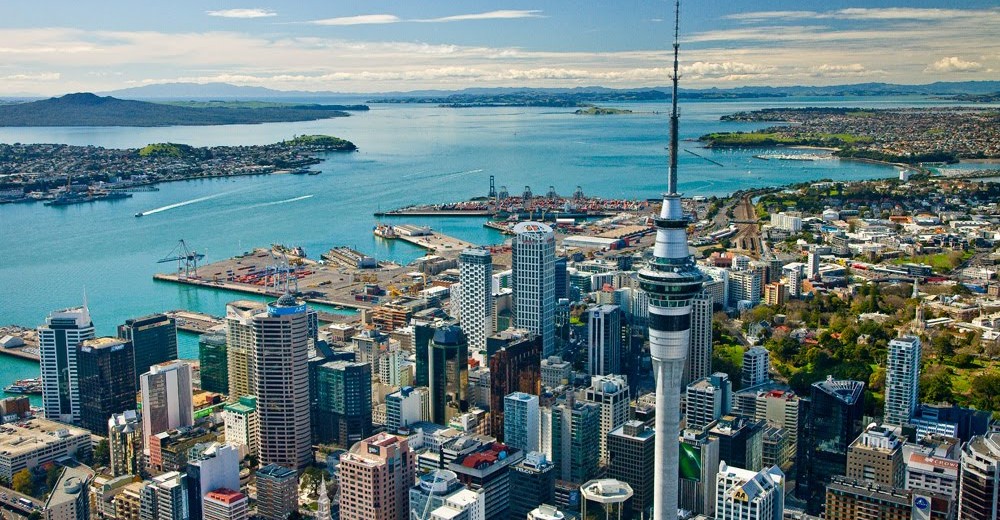







Hobart is the capital and most populous city of the Australian island state of Tasmania. With a population of approximately 225,000 (over 40% of Tasmania's population), it is the least populated Australian state capital city, and second smallest if territories are taken into account (after Darwin, Northern Territory). Founded in 1804 as a British penal colony, Hobart, formerly known as Hobart Town or Hobarton, is Australia's second oldest capital city after Sydney, New South Wales. Prior to British settlement, the Hobart area had been occupied for possibly as long as 35,000 years, by the semi-nomadic Mouheneener tribe, a sub-group of the Nuennone, or South-East tribe. The descendants of these Aboriginal Tasmanians often refer to themselves as 'Palawa'.

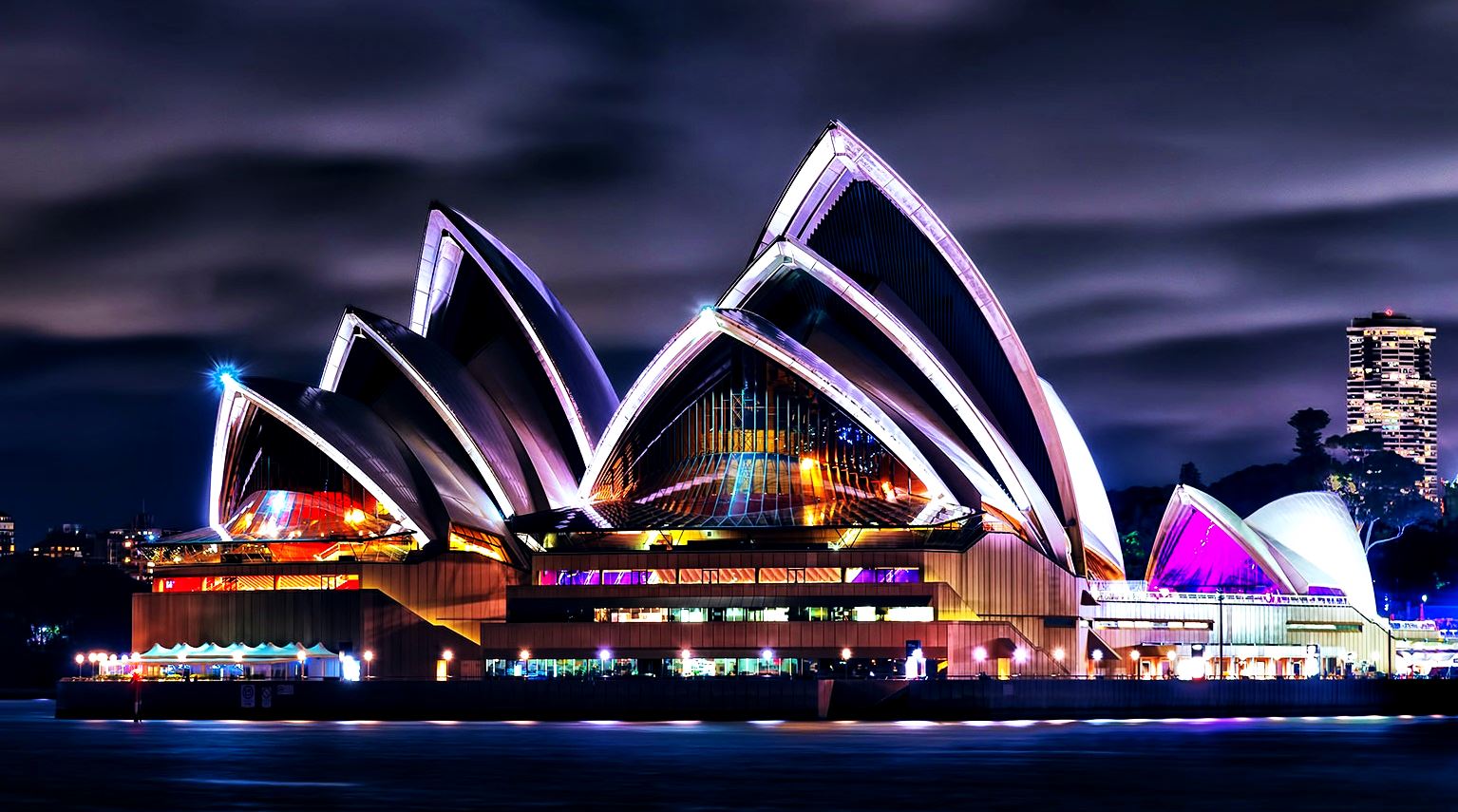
Sydney is the state capital of New South Wales and the most populous city in Australiaand Oceania. Located on Australia's east coast, the metropolis surrounds Port Jackson and extends about 70 km (43.5 mi) on its periphery towards the Blue Mountains to the west, Hawkesbury to the north, and Macarthur to the south. Sydney is made up of 658 suburbs, 40 local government areas and 15 contiguous regions. Residents of the city are known as "Sydneysiders". As of June 2017, Sydney's estimated metropolitan population was 5,131,326, and is home to approximately 65% of the state's population.

Sydney is the state capital of New South Wales and the most populous city in Australiaand Oceania. Located on Australia's east coast, the metropolis surrounds Port Jackson and extends about 70 km (43.5 mi) on its periphery towards the Blue Mountains to the west, Hawkesbury to the north, and Macarthur to the south. Sydney is made up of 658 suburbs, 40 local government areas and 15 contiguous regions. Residents of the city are known as "Sydneysiders". As of June 2017, Sydney's estimated metropolitan population was 5,131,326, and is home to approximately 65% of the state's population.



Melbourne is the capital and most populous city of the Australian state of Victoria, and the second most populous city in Australia and Oceania. Its name refers to an urban agglomeration of 9,992.5 km2 (3,858.1 sq mi), comprising a metropolitan area with 31 municipalities, and is also the common name for its city centre. The city occupies much of the coastline of Port Phillip bay and spreads into the hinterlands towards the Dandenong and Macedon ranges, Mornington Peninsula and Yarra Valley. It has a population of approximately 4.9 million (19% of the population of Australia), and its inhabitants are referred to as "Melburnians".
The city was founded on 30 August 1835, in what was the British colony of New South Wales, by free settlers from the colony of Van Diemen’s Land. It was incorporated as a Crown settlement in 1837 and named in honour of the British Prime Minister, William Lamb, 2nd Viscount Melbourne. It was declared a city by Queen Victoria in 1847, after which it became the capital of the new colony of Victoria in 1851. In the wake of the 1850s Victorian gold rush, the city entered the "Marvellous Melbourne" boom period, transforming into one of the most important cities in the British Empire and one of the largest and wealthiest in the world. After the federation of Australia in 1901, it served as interim seat of government of the new nation until Canberra became the permanent capital in 1927. Today, it is a leading financial centre in the Asia-Pacific region and ranks 20th in the Global Financial Centres Index.


Adelaide is the capital city of the state of South Australia, and the fifth-most populous city of Australia. In June 2017, Adelaide had an estimated resident population of 1,333,927. Adelaide is home to more than 75 percent of the South Australian population, making it the most centralised population of any state in Australia.
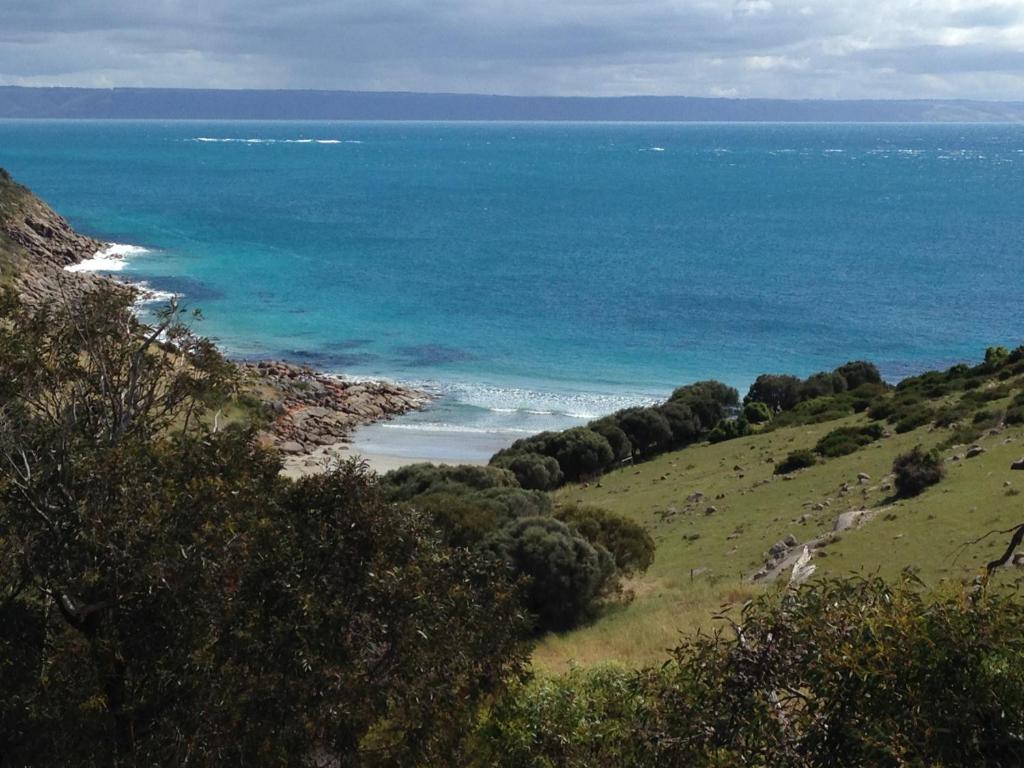



Albany is a port city in the Great Southern region of Western Australia, 418 km SE of Perth, the state capital. Albany is the oldest colonial settlement in Western Australia, predating Perth and Fremantle by over two years.
The city centre is at the northern edge of Princess Royal Harbour, which is a part of King George Sound. The central business district is bounded by Mount Clarence to the east and Mount Melville to the west. The city is in the local government area of the City of Albany.











Мале — это столица Мальдивской республики, которая расположена в центре архипелага. Территория составляет всего два квадратных километра, из-за чего город не может иметь все, что положено столице. Поэтому крупные предприятия, концерны, и важные государственные объекты, такие например как аэропорт, находятся на соседних островах. Несмотря на маленькие размеры, остров довольно густо населён, поэтому его территорию искусственно расширяют. Сегодня Мале единственный город в стране, который имеет асфальтированные дороги и высотные дома. Но, не смотря на это, город сохранил красоту дикой природы и прелесть белых пляжей с чистой морской водой.











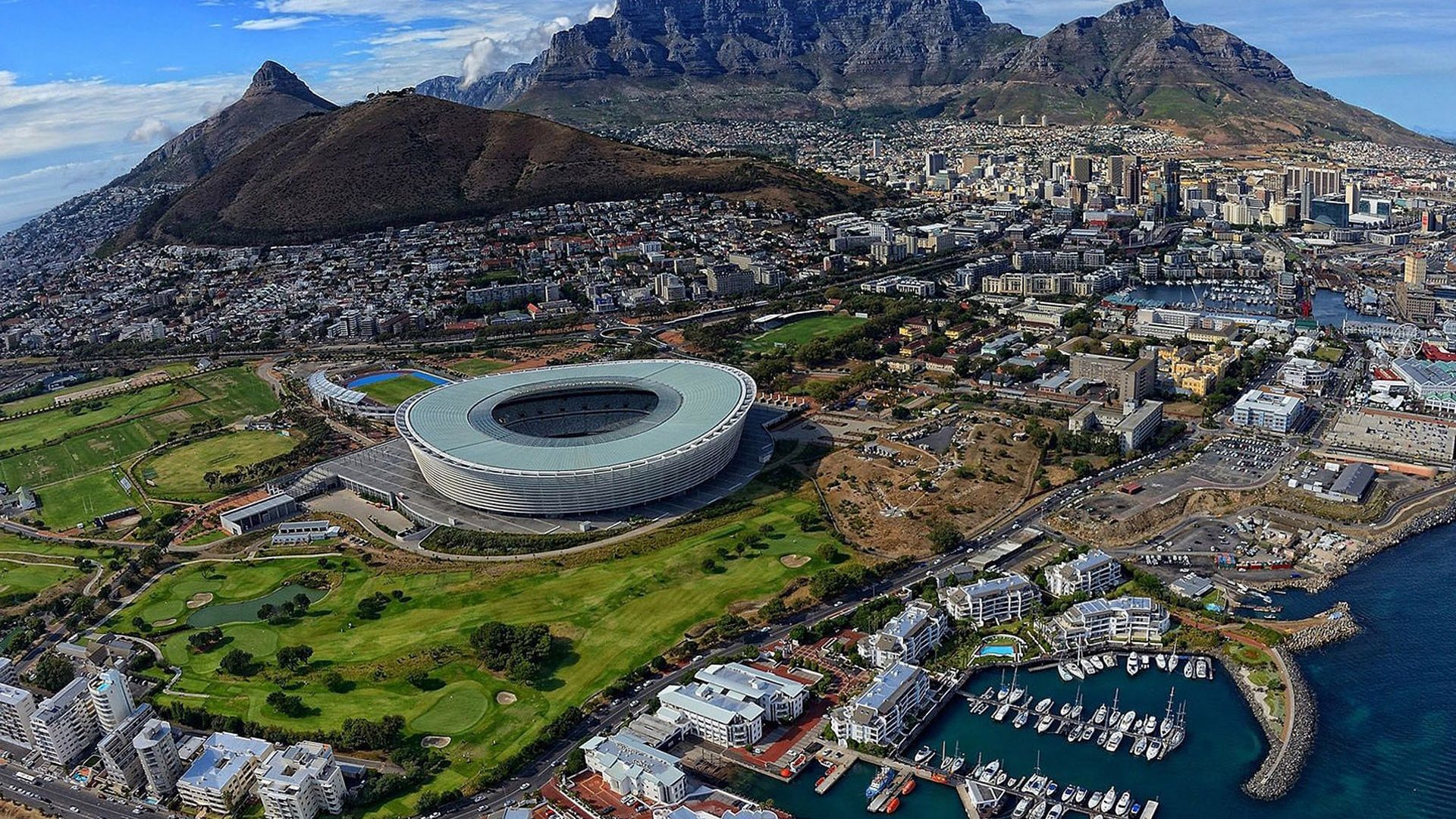
Cape Town is the oldest city in South Africa, colloquially named the Mother City. It is the legislative capital of South Africa and primate city of the Western Cape province. It forms part of the City of Cape Town metropolitan municipality.
The Parliament of South Africa sits in Cape Town. The other two capitals are located in Pretoria (the administrative capital where the Presidency is based) and Bloemfontein (the judicial capital where the Supreme Court of Appeal is located). The city is known for its harbour, for its natural setting in the Cape Floristic Region, and for landmarks such as Table Mountain and Cape Point. As of 2014, it is the 10th most populous city in Africa and home to 64% of the Western Cape's population. It is one of the most multicultural cities in the world, reflecting its role as a major destination for immigrants and expatriates to South Africa. The city was named the World Design Capital for 2014 by the International Council of Societies of Industrial Design. In 2014, Cape Town was named the best place in the world to visit by both The New York Times and The Daily Telegraph.
Located on the shore of Table Bay, Cape Town, as the oldest urban area in South Africa, was developed by the Dutch East India Company (VOC) as a supply station for Dutch ships sailing to East Africa, India, and the Far East. Jan van Riebeeck's arrival on 6 April 1652 established Dutch Cape Colony, the first permanent European settlement in South Africa. Cape Town outgrew its original purpose as the first European outpost at the Castle of Good Hope, becoming the economic and cultural hub of the Cape Colony. Until the Witwatersrand Gold Rush and the development of Johannesburg, Cape Town was the largest city in South Africa.










Dakar is the capital and largest city of Senegal. It is located on the Cap-Vert peninsula on the Atlantic coast and is the westernmost city on the African mainland. The city of Dakar proper has a population of 1,030,594, whereas the population of the Dakar metropolitan area is estimated at 2.45 million.
The area around Dakar was settled in the 15th century. The Portuguese established a presence on the island of Gorée off the coast of Cap-Vert and used it as a base for the Atlantic slave trade. France took over the island in 1677. Following the abolition of the slave trade and French annexation of the mainland area in the 19th century, Dakar grew into a major regional port and a major city of the French colonial empire. In 1902, Dakar replaced Saint-Louis as the capital of French West Africa. From 1959 to 1960, Dakar was the capital of the short-lived Mali Federation. In 1960, it became the capital of the independent Republic of Senegal.







Sicily is the largest island in the Mediterranean Sea and one of the 20 regions of Italy. It is one of the five Italian autonomous regions, in Southern Italy along with surrounding minor islands, officially referred to as Regione Siciliana.
Sicily is located in the central Mediterranean Sea, south of the Italian Peninsula, from which it is separated by the narrow Strait of Messina. Its most prominent landmark is Mount Etna, the tallest active volcano in Europe, and one of the most active in the world, currently 3,329 m (10,922 ft) high. The island has a typical Mediterranean climate.
The earliest archaeological evidence of human activity on the island dates from as early as 12,000 BC. By around 750 BC, Sicily had three Phoenician and a dozen Greek colonies and, for the next 600 years, it was the site of the Sicilian Wars and the Punic Wars. After the fall of the Roman Empire in the 5th century AD, Sicily was ruled during the Early Middle Ages by the Vandals, the Ostrogoths, the Byzantine Empire, and the Emirate of Sicily. The Norman conquest of southern Italy led to the creation of the Kingdom of Sicily, which was subsequently ruled by the Hohenstaufen, the Capetian House of Anjou, Spain, and the House of Habsburg. It was finally unified under the House of Bourbon with the Kingdom of Naples as the Kingdom of the Two Sicilies. It became part of Italy in 1860 following the Expedition of the Thousand, a revolt led by Giuseppe Garibaldi during the Italian unification, and a plebiscite. Sicily was given special status as an autonomous region on 15th May 1946, 18 days before the Italian constitutional referendum of 1946. Albeit, much of the autonomy still remains unapplied, especially financial autonomy, because the autonomy-activating laws have been deferred to be approved by the parithetic committee (50% Italian State, 50% Regione Siciliana), since 1946.
Sicily has a rich and unique culture, especially with regard to the arts, music, literature, cuisine, and architecture. It is also home to important archaeological and ancient sites, such as the Necropolis of Pantalica, the Valley of the Temples, Erice and Selinunte.
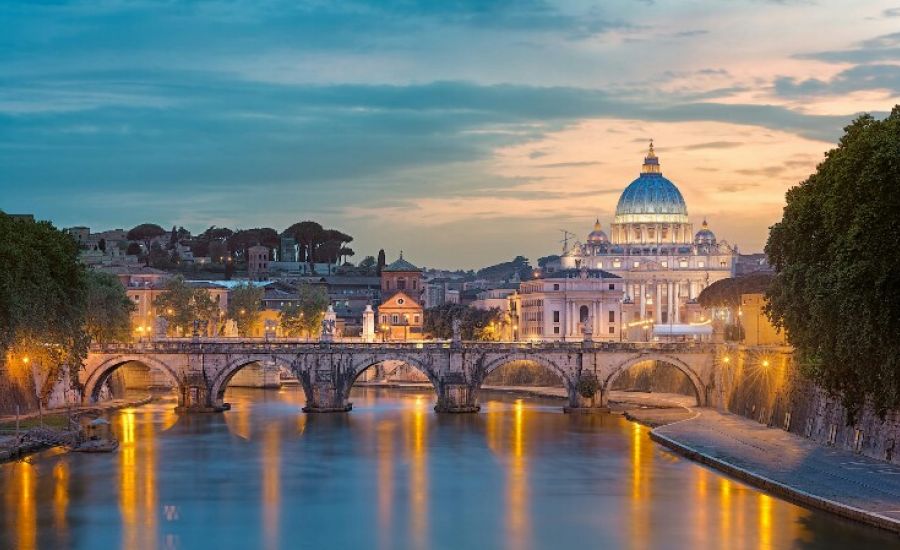
Rome is the capital city and a special comune of Italy (named Comune di Roma Capitale). Rome also serves as the capital of the Lazio region. With 2,872,800 residents in 1,285 km2(496.1 sq mi), it is also the country's most populated comune. It is the fourth-most populous city in the European Union by population within city limits. It is the centre of the Metropolitan City of Rome, which has a population of 4,355,725 residents, thus making it the most populous metropolitan city in Italy. Rome is located in the central-western portion of the Italian Peninsula, within Lazio (Latium), along the shores of the Tiber. The Vatican City (the smallest country in the world) is an independent country inside the city boundaries of Rome, the only existing example of a country within a city: for this reason Rome has been often defined as capital of two states.
Rome's history spans 28 centuries. While Roman mythology dates the founding of Rome at around 753 BC, the site has been inhabited for much longer, making it one of the oldest continuously occupied sites in Europe. The city's early population originated from a mix of Latins, Etruscans, and Sabines. Eventually, the city successively became the capital of the Roman Kingdom, the Roman Republic and the Roman Empire, and is regarded as the birthplace of Western civilization and by some as the first ever metropolis. It was first called The Eternal City (Latin: Urbs Aeterna; Italian: La Città Eterna) by the Roman poet Tibullus in the 1st century BC, and the expression was also taken up by Ovid, Virgil, and Livy. Rome is also called the "Caput Mundi" (Capital of the World). After the fall of the Western Empire, which marked the beginning of the Middle Ages, Rome slowly fell under the political control of the Papacy, which had settled in the city since the 1st century AD, until in the 8th century it became the capital of the Papal States, which lasted until 1870. Beginning with the Renaissance, almost all the popes since Nicholas V (1447–1455) pursued over four hundred years a coherent architectural and urban programme aimed at making the city the artistic and cultural centre of the world. In this way, Rome became first one of the major centres of the Italian Renaissance, and then the birthplace of both the Baroque style and Neoclassicism. Famous artists, painters, sculptors and architects made Rome the centre of their activity, creating masterpieces throughout the city. In 1871, Rome became the capital of the Kingdom of Italy, which, in 1946, became the Italian Republic.
Rome has the status of a global city. In 2016, Rome ranked as the 14th-most-visited city in the world, 3rd most visited in the European Union, and the most popular tourist attraction in Italy. Its historic centre is listed by UNESCO as a World Heritage Site. The famous Vatican Museums are among the world's most visited museums while the Colosseum was the most popular tourist attraction in world with 7.4 million visitors in 2018. Host city for the 1960 Summer Olympics, Rome is the seat of several specialized agencies of the United Nations, such as the Food and Agriculture Organization (FAO), the World Food Programme (WFP) and the International Fund for Agricultural Development (IFAD). The city also hosts the Secretariat of the Parliamentary Assembly of the Union for the Mediterranean (UfM) as well as the headquarters of many international business companies such as Eni, Enel, TIM, Leonardo S.p.A., and national and international banks such as Unicredit and BNL. Its business district, called EUR, is the base of many companies involved in the oil industry, the pharmaceutical industry, and financial services. Rome is also an important fashion and design centre thanks to renowned international brands centered in the city. Rome's Cinecittà Studios have been the set of many Academy Award–winning movies.
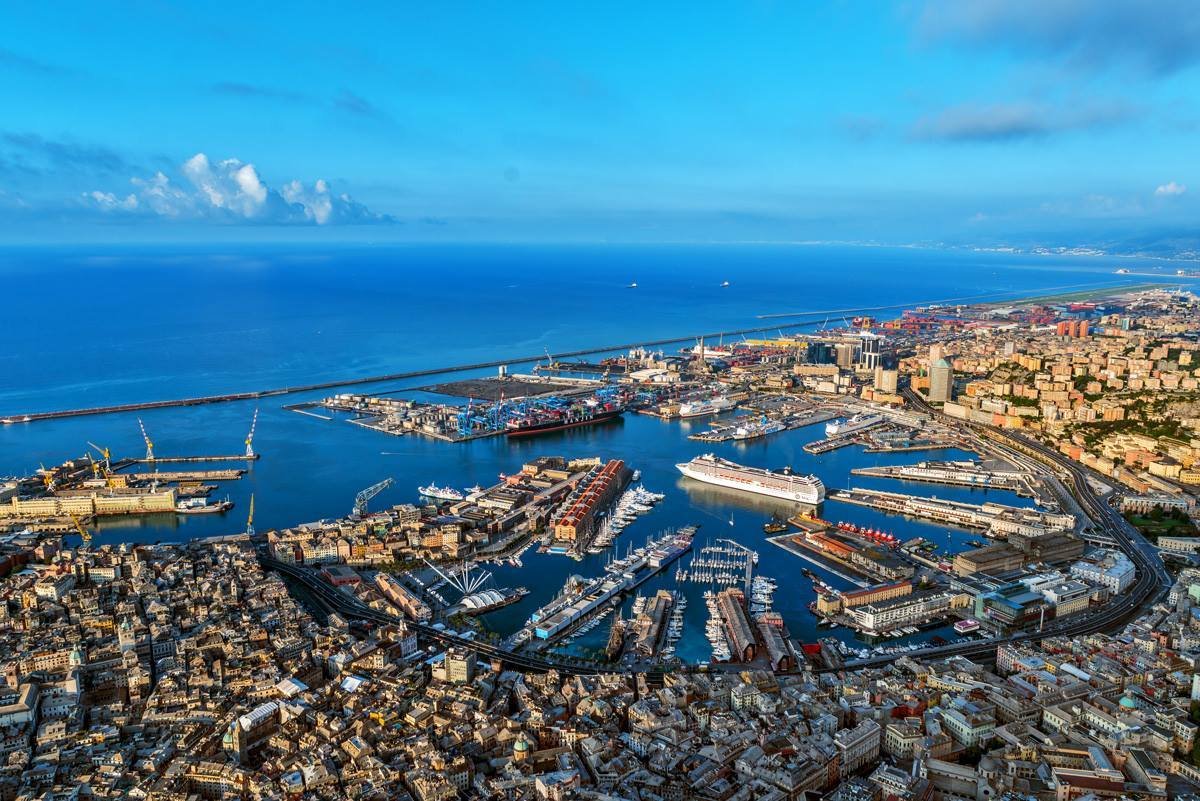
Genoa is the capital of the Italian region of Liguria and the sixth-largest city in Italy. In 2015, 594,733 people lived within the city's administrative limits. As of the 2011 Italian census, the Province of Genoa, which in 2015 became the Metropolitan City of Genoa, counted 855,834 resident persons. Over 1.5 million people live in the wider metropolitan area stretching along the Italian Riviera.
Located on the Gulf of Genoa in the Ligurian Sea, Genoa has historically been one of the most important ports on the Mediterranean: it is currently the busiest in Italy and in the Mediterranean Sea and twelfth-busiest in the European Union. Genoa has been nicknamed la Superba ("the proud one") due to its glorious past and impressive landmarks. Part of the old town of Genoa was inscribed on the World Heritage List (UNESCO) in 2006 as Genoa: Le Strade Nuove and the system of the Palazzi dei Rolli. The city's rich cultural history in art, music and cuisine allowed it to become the 2004 European Capital of Culture. It is the birthplace of Christopher Columbus, Andrea Doria, Niccolò Paganini, Giuseppe Mazzini, Renzo Piano and Grimaldo Canella, founder of the House of Grimaldi, among others.
Genoa, which forms the southern corner of the Milan-Turin-Genoa industrial triangle of Northwest Italy, is one of the country's major economic centers. The city has hosted massive shipyards and steelworks since the 19th century, and its solid financial sector dates back to the Middle Ages. The Bank of Saint George, founded in 1407, is among the oldest in the world and has played an important role in the city's prosperity since the middle of the 15th century. Today a number of leading Italian companies are based in the city, including Fincantieri, Selex ES, Ansaldo Energia, Ansaldo STS, Edoardo Raffinerie Garrone, Piaggio Aerospace, Mediterranean Shipping Company and Costa Cruises.

Marseille is the second-largest city of France. The main city of the historical province of Provence, it nowadays is the prefecture of the department of Bouches-du-Rhône and region of Provence-Alpes-Côte d'Azur. It is located on France's south coast near the mouth of the Rhône river. The city covers an area of 241 km2 (93 sq mi) and had a population of 852,516 in 2012. Its metropolitan area, which extends over 3,173 km2 (1,225 sq mi) is the third-largest in France after Paris and Lyon, with a population of 1,831,500 as of 2010.
Known to the ancient Greeks and Romans as Massalia, Marseille was an important European trading centre and remains the main commercial port of the French Republic. Marseille is now France's largest city on the Mediterranean coast and the largest port for commerce, freight and cruise ships. The city was European Capital of Culture in 2013 and European Capital of Sport in 2017; it hosted matches at the 1998 World Cup and Euro 2016. It is home to Aix-Marseille University.

Barcelona is a city in Spain. It is the capital and largest city of Catalonia, as well as the second most populous municipality of Spain. With a population of 1.6 million within city limits, its urban area extends to numerous neighbouring municipalities within the Province of Barcelona and is home to around 4.8 million people, making it the sixth most populous urban area in the European Union after Paris, London, Madrid, the Ruhr area and Milan. It is one of the largest metropolises on the Mediterranean Sea, located on the coast between the mouths of the rivers Llobregat and Besòs, and bounded to the west by the Serra de Collserola mountain range, the tallest peak of which is 512 metres (1,680 feet) high.
Founded as a Roman city, in the Middle Ages Barcelona became the capital of the County of Barcelona. After merging with the Kingdom of Aragon, Barcelona continued to be an important city in the Crown of Aragon as an economic and administrative centre of this Crown and the capital of the Principality of Catalonia. Barcelona has a rich cultural heritage and is today an important cultural centre and a major tourist destination. Particularly renowned are the architectural works of Antoni Gaudí and Lluís Domènech i Montaner, which have been designated UNESCO World Heritage Sites. The headquarters of the Union for the Mediterranean are located in Barcelona. The city is known for hosting the 1992 Summer Olympics as well as world-class conferences and expositions and also many international sport tournaments.
Barcelona is one of the world's leading tourist, economic, trade fair and cultural centres, and its influence in commerce, education, entertainment, media, fashion, science, and the arts all contribute to its status as one of the world's major global cities. It is a major cultural and economic centre in southwestern Europe, 24th in the world (before Zürich, after Frankfurt) and a financial centre. In 2008 it was the fourth most economically powerful city by GDP in the European Union and 35th in the world with GDP amounting to €177 billion. In 2012 Barcelona had a GDP of $170 billion; and it was leading Spain in employment rate in that moment.
In 2009 the city was ranked Europe's third and one of the world's most successful as a city brand. In the same year the city was ranked Europe's fourth best city for business and fastest improving European city, with growth improved by 17% per year, and the city has been experiencing strong and renewed growth for the past three years. Since 2011 Barcelona has been a leading smart city in Europe. Barcelona is a transport hub, with the Port of Barcelona being one of Europe's principal seaports and busiest European passenger port, an international airport, Barcelona–El Prat Airport, which handles over 50 million passengers per year, an extensive motorway network, and a high-speed rail line with a link to France and the rest of Europe.